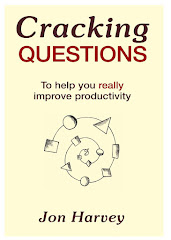Leaders are often very good at managing the present and
responding to events and issues as they arise. After all, it is often people's
ability to troubleshoot that helps people get promoted. But, a key part of
being a good leader is managing the future. This is far more challenging.
The one thing that we do know about the future is that we
do not know what the future holds in store. We can make predictions based on
past trends, we can devise likely scenarios and plan around these. But in the
end, managing the future is a journey into the unknown. What makes the future
particularly difficult to predict is not knowing how people will react to
changing circumstances. Economists spend years devising models to anticipate
the effect of various changes to taxes, commodity price changes and so forth.
But these models often struggle with anticipating the capricious and messy decisions
that people make within these changing circumstances. For example how many
economists or business leaders predicted the recent recession?
(Some have argued of course that the reason that astrology
exists is to make economics appear scientific!)
One approach that is widely used to manage the future is
to use whole system open simulations. These are different from simulations that
you may have come across such as console computer games (including flight
simulators, of course) or training exercises where there are a limited number
of options from which to choose. These are essentially 'closed' simulations and
a great deal of effort goes into designing the 'rules' of the simulation (if x is
chosen then y occurs). In essence they seek to codify and 'bottle' human complexity. Whilst
they are interactive they are not developmental nor do they change much in the
light of learning and experience. Such closed simulations also struggle with
people who seek to break the rules or who are just not sure what to do.
People breaking the rules (or at least bending them) is
almost, perhaps, what makes us human rather than automatons.
So if an organisation wants to investigate
- how a new service might be delivered,
- how a new organisational structure might work,
- how a new product might change the market,
- how a partnership or strategic alliance might work out
... a whole system open simulation might well be a very
effective and efficient way to do this.
The basic ingredients of a whole system open simulation
are:
- Get all the stakeholders in the room together - ie anyone
who will be affected or will want to affect how the future happens
- Put people into roles that are similar to (but critically
not the same as) their existing roles so that they can apply their knowledge,
experience and insights
- Give people a 'map' of the new system/structure/product
(etc.) with enough information to bring it to life but not so much as to
overload people with spurious detail
- Set up some tasks and objectives for the stakeholders to
work on (such as agree a plan, or test an idea, or trial a new service...)
within a concertinaed time frame
- Consider how you may want to 'interrupt' the flow with
'events' that could happen in order to test reactions and consequences
- Give people the time to reflect on what they have
discovered from being part of this fictional system - what did they learn, what
surprised them, what concerned them etc?
- Finally give people time to resolve - 'now what?' - what
learning needs to be applied to real world and how?
Because these are whole system 'open' simulations there
is no need to try and predict or seek to contain the simulation. The simulation
itself is a voyage of discovery and becomes a crucible of learning. People find
out how they may need to adjust what they do and how they will behave in the
future within the new circumstances. (As a consequence, simulations are a very
effective tool in the development of leaders and managers.) Strategies &
plans can be devised, refreshed or jettisoned.
Perhaps one way to sum up whole system open simulations
is to say that they are about taking your shoes off rather than forcing shoes
onto your feet. People can play (and bend the rules) within such a simulation
and so learn, innovate and plan for the future. As Roger von Oech (author of '
A Whack on the Side of the Head')
said "
Necessity may be the Mother of invention, but play is certainly the Father"
Do you want to play?









.jpg)


